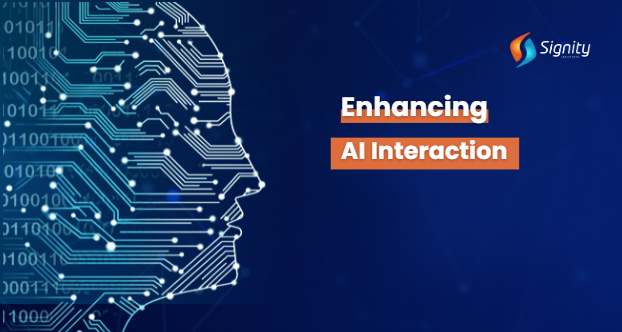Enhancing AI Interaction: A Guide to Prompt Engineering
Explore the intricacies of prompt engineering to elevate AI interactions. This guide delves into crafting effective prompts for optimal results in diverse applications, empowering users to harness the full potential of AI.

As Artificial Intelligence (AI) becomes increasingly integrated into our daily lives, the importance of effective interaction between humans and AI systems cannot be overstated. Prompt engineering plays a crucial role in enhancing this interaction by enabling users to communicate their intentions clearly and efficiently to AI models. In this article, we'll explore the significance of prompt engineering and provide a guide to implementing it effectively in AI systems.
Understanding Prompt Engineering
Prompt engineering involves designing prompts or input queries that effectively guide AI models to produce desired outputs or responses. These prompts serve as the interface between users and AI systems, influencing the model's behaviour and the quality of its outputs. Effective, prompt engineering requires careful consideration of language, context, and user intent to ensure that AI models interpret inputs accurately and generate relevant outputs.
Importance of Effective Prompt Engineering
Improved Performance:
Well-crafted prompts can significantly enhance the performance of AI models by providing clear guidance and context. They help mitigate ambiguity and bias in model predictions, leading to more accurate and relevant results.
User Experience:
Prompt engineering enhances the overall user experience by guiding users in formulating inputs that align with AI models' capabilities. Clear and intuitive prompts facilitate smoother interactions, reducing user frustration and confusion.
Mitigating Bias and Misinformation:
Thoughtfully designed prompts can help mitigate bias and misinformation in AI-generated outputs. By framing questions and queries in a neutral and objective manner, prompt engineering promotes fairness and accuracy in AI systems.
Customization and Adaptability:
Prompt engineering allows for customization and adaptability in AI interactions, catering to diverse user needs and preferences. By tailoring prompts to specific tasks, domains, or user demographics, AI systems can deliver more relevant and personalized responses.
Guide to Implementing Prompt Engineering
Define User Intent:
Begin by clearly defining the user's intent or objective in interacting with the AI system. Understand the context of the interaction and identify the specific task or information the user seeks to obtain.
Craft Clear and Concise Prompts:
Design prompts that are clear, concise, and unambiguous. Use language that is easy to understand and aligns with the user's vocabulary and communication style.
Provide Context and Examples:
Offer context and relevant examples to help users formulate effective prompts. Provide guidance on how to structure queries and frame questions to elicit the desired information or response from the AI model.
Iterate and Refine:
Continuously iterate on prompt design based on user feedback and performance metrics. Monitor the effectiveness of prompts in guiding AI model behaviour and adjust them as needed to improve interaction outcomes.
Test Across Diverse Scenarios:
Test prompts across diverse scenarios, contexts, and user demographics to ensure robustness and inclusivity. In prompt design, Consider factors such as language variations, cultural differences, and accessibility requirements.
Monitor and Update Regularly:
Monitor the performance of AI interactions over time and update prompts as necessary to adapt to changing user needs and preferences. Stay informed about advancements in prompt engineering techniques and incorporate best practices into your approach.
Technical Implementation Example
Let's consider a technical implementation example of prompt engineering in a text-based AI chatbot designed to provide customer support:
Define User Intent:
Identify common customer queries and support issues, such as product inquiries, troubleshooting assistance, and account management tasks.
Craft Clear and Concise Prompts:
Design prompts that prompt users to provide specific details about their issue or request, such as "Please describe the problem you're experiencing with your product" or "What can I assist you with today?"
Provide Context and Examples:
Offer contextual information and examples to guide users in formulating their queries effectively. Provide prompts such as "For example, you can say 'My device is not powering on' or 'I need help resetting my password.'"
Iterate and Refine:
Gather feedback from users and analyze interaction logs to identify areas for improvement. Refine prompts based on user responses and performance metrics to optimize interaction outcomes.
Test Across Diverse Scenarios:
Test prompts across different customer scenarios, languages, and communication styles to ensure effectiveness and inclusivity. Adjust prompts as needed to accommodate variations in user behaviour and preferences.
Monitor and Update Regularly:
Continuously monitor the chatbot's performance and update prompts to address emerging issues or user feedback. Stay proactive in refining the prompt design to maintain a positive user experience.
Conclusion
Prompt engineering is a critical component of enhancing AI interaction, enabling users to communicate effectively with AI systems and achieve desired outcomes. By following the principles outlined in this guide and implementing prompt engineering best practices, organizations can optimize the performance, usability, and inclusivity of their AI systems.
Let's Embark on a Journey to AI Excellence Together
Our team is dedicated to building cutting-edge generative AI solutions that cater to your unique business requirements.
As AI continues to evolve, the importance of effective, prompt engineering will only grow, shaping the future of human-AI interaction in diverse domains and applications.



.png?width=344&height=101&name=Mask%20group%20(5).png)

















